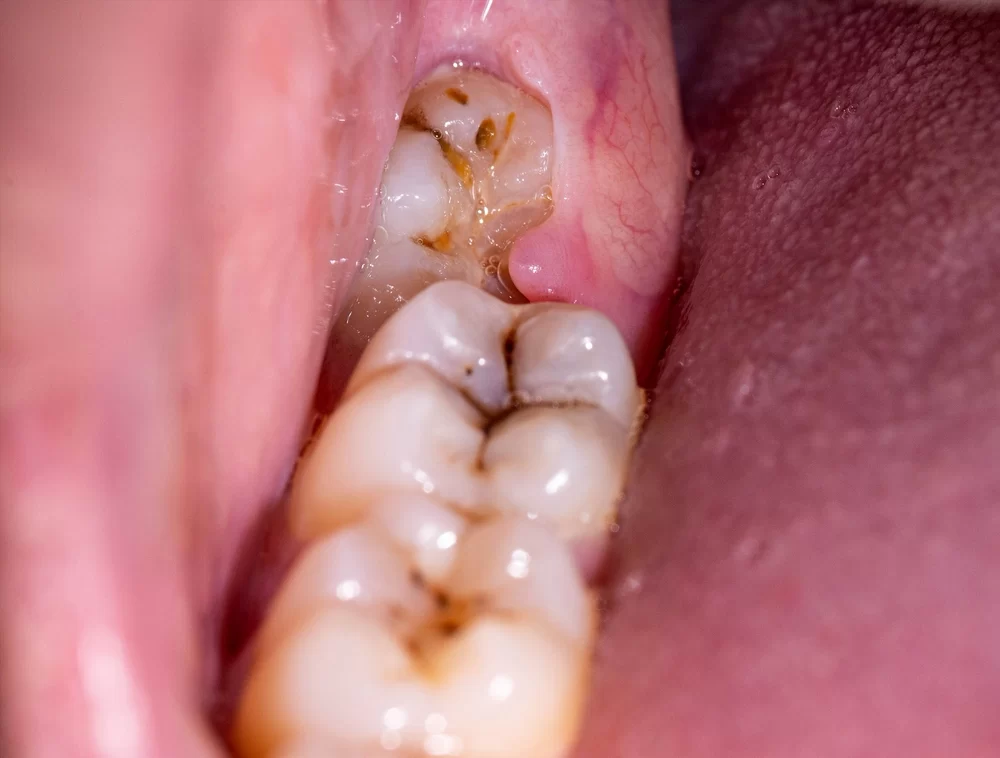
- Common Symptoms of Wisdom Tooth Infection
- Why Wisdom Tooth Infections Occur
- Detailed Explanation of Pain and Swelling
- Real-Life Experience with Wisdom Tooth Infection
- Effective Treatment and Prevention Strategies
- When to See a Dentist
1. Common Symptoms of Wisdom Tooth Infection
Wisdom tooth infections can be surprisingly painful and disruptive, yet many people don’t recognize the early signs. The symptoms of wisdom tooth infection often include persistent pain around the back of the mouth, swelling of the gums near the wisdom tooth, redness, and sometimes a bad taste or odor coming from the infected area. In some cases, a low-grade fever might develop as the body fights off the infection.
These symptoms tend to worsen if left untreated, making it crucial to identify them early. A common complaint is a throbbing pain that intensifies when chewing or opening the mouth wide. Additionally, some people notice difficulty swallowing or even swelling that extends beyond the immediate tooth area, affecting the jaw and face.
1.1 Recognizing the Signs Beyond Pain
While pain is the most noticeable symptom, wisdom tooth infections can also cause other subtle changes such as a swollen lymph node under the jaw, bad breath, or a metallic taste. These indicators often suggest the infection is advancing and that professional dental care is necessary.
2. Why Wisdom Tooth Infections Occur
Wisdom teeth, also known as third molars, are the last teeth to emerge, usually between the ages of 17 and 25. Because they often come in partially or at an angle, they create pockets where bacteria can accumulate. This leads to infection—especially if food particles become trapped and oral hygiene is difficult to maintain in that area.
Another common cause is pericoronitis, an inflammation of the gum tissue surrounding a partially erupted wisdom tooth. This condition creates a breeding ground for bacteria, resulting in infection symptoms such as swelling and pain. In some cases, impacted wisdom teeth that cannot properly erupt cause chronic irritation and infection.
2.1 The Role of Oral Hygiene and Anatomy
Oral hygiene plays a vital role in preventing infections. Due to the location of wisdom teeth, brushing and flossing can be challenging, which increases risk. Furthermore, the anatomy of the jaw and how wisdom teeth grow can vary widely, meaning some individuals are more prone to infections than others.
3. Detailed Explanation of Pain and Swelling
The pain from a wisdom tooth infection typically stems from inflammation and pressure in the surrounding tissues. The infection causes the gum to swell, which pushes against the tooth and jawbone, triggering discomfort. Inflammation can spread, causing the entire cheek or jaw area to feel tender or stiff.
Swelling is not just an aesthetic issue—it signals the body’s immune response to the infection. The accumulation of pus or fluid in the infected area creates pressure that intensifies pain and may even cause difficulty in opening the mouth fully.
3.1 How Pain Varies Among Individuals
Some people experience mild discomfort, while others face severe, debilitating pain. This variation depends on the infection’s severity, the individual’s pain tolerance, and how quickly treatment is sought. Early intervention often leads to less severe symptoms and faster recovery.
4. Real-Life Experience with Wisdom Tooth Infection
Take the case of Emily, a 23-year-old graduate student who ignored mild discomfort near her lower right wisdom tooth. Within a few days, the area became visibly swollen, and she developed a fever. The infection spread enough to cause difficulty eating and sleeping. After visiting a dentist, Emily was prescribed antibiotics and later had her wisdom tooth extracted, which ultimately resolved the infection.
This case highlights the importance of paying attention to early symptoms. If Emily had visited a dental professional sooner, she might have avoided some of the more intense symptoms and prolonged discomfort.
4.1 Lessons from Emily’s Story
Emily’s experience serves as a reminder that wisdom tooth infections can escalate quickly. Timely diagnosis and treatment not only relieve pain but also prevent potential complications such as abscess formation or spreading infection.
5. Effective Treatment and Prevention Strategies
Addressing wisdom tooth infection usually involves a combination of professional dental care and home remedies. Dentists may prescribe antibiotics to control the infection, recommend pain relievers to ease discomfort, and suggest warm salt water rinses to reduce swelling.
In many cases, removal of the infected wisdom tooth is the most definitive treatment, especially if the tooth is impacted or repeatedly causes problems. This surgical procedure, when done promptly, prevents recurring infections and long-term complications.
5.1 Preventive Measures to Consider
Maintaining excellent oral hygiene around the wisdom teeth is critical. This includes careful brushing, flossing, and using antiseptic mouthwash. Regular dental checkups enable early detection of potential issues. Additionally, consulting with dental professionals at Dentistry Toothtruth can provide personalized advice and access to suitable products or services that help keep wisdom teeth healthy.
6. When to See a Dentist
Not all discomfort around wisdom teeth requires immediate concern, but certain symptoms warrant prompt dental consultation. These include severe pain lasting more than a couple of days, noticeable swelling of the jaw or face, fever, difficulty swallowing or opening the mouth, and any pus or discharge near the tooth.
Ignoring these signs may lead to worsening infection or even systemic issues. Therefore, professional evaluation ensures accurate diagnosis and timely treatment to safeguard overall oral health.
6.1 The Importance of Professional Guidance
Visiting a dentist at the first sign of trouble is the best course of action. Dentists can perform thorough examinations, including X-rays, to understand the extent of infection and recommend the most effective treatment. Resources like Dentistry Toothtruth offer access to expert advice and services that support patients through diagnosis, treatment, and recovery.







 West Coast Dental of Gage3.0 (1043 review)
West Coast Dental of Gage3.0 (1043 review) Dr. Edwin J Szczepanik, DMD4.0 (321 review)
Dr. Edwin J Szczepanik, DMD4.0 (321 review) Aspen Dental - Philadelphia, PA4.0 (326 review)
Aspen Dental - Philadelphia, PA4.0 (326 review) Dental Crown in an Hour: Naples4.0 (121 review)
Dental Crown in an Hour: Naples4.0 (121 review) Pura Dental Center Kingsbridge4.0 (498 review)
Pura Dental Center Kingsbridge4.0 (498 review) Ethos Dental Group4.0 (37 review)
Ethos Dental Group4.0 (37 review) The Importance of Oral Health Education During Pregnancy for a Healthy Pregnancy
The Importance of Oral Health Education During Pregnancy for a Healthy Pregnancy Best Tips for Brushing Your Teeth Properly for Healthy Gums: Essential Techniques for Oral Health
Best Tips for Brushing Your Teeth Properly for Healthy Gums: Essential Techniques for Oral Health Why Skipping Dental Checkups Can Lead to Bigger Oral Health Problems
Why Skipping Dental Checkups Can Lead to Bigger Oral Health Problems Advantages of Porcelain Dental Restorations
Advantages of Porcelain Dental Restorations How Can Diabetes Cause Tooth and Gum Problems? Preventing and Managing Oral Health Issues
How Can Diabetes Cause Tooth and Gum Problems? Preventing and Managing Oral Health Issues Healthy Habits for Promoting Good Oral Health and Hygiene: Tips for a Healthy Smile
Healthy Habits for Promoting Good Oral Health and Hygiene: Tips for a Healthy Smile